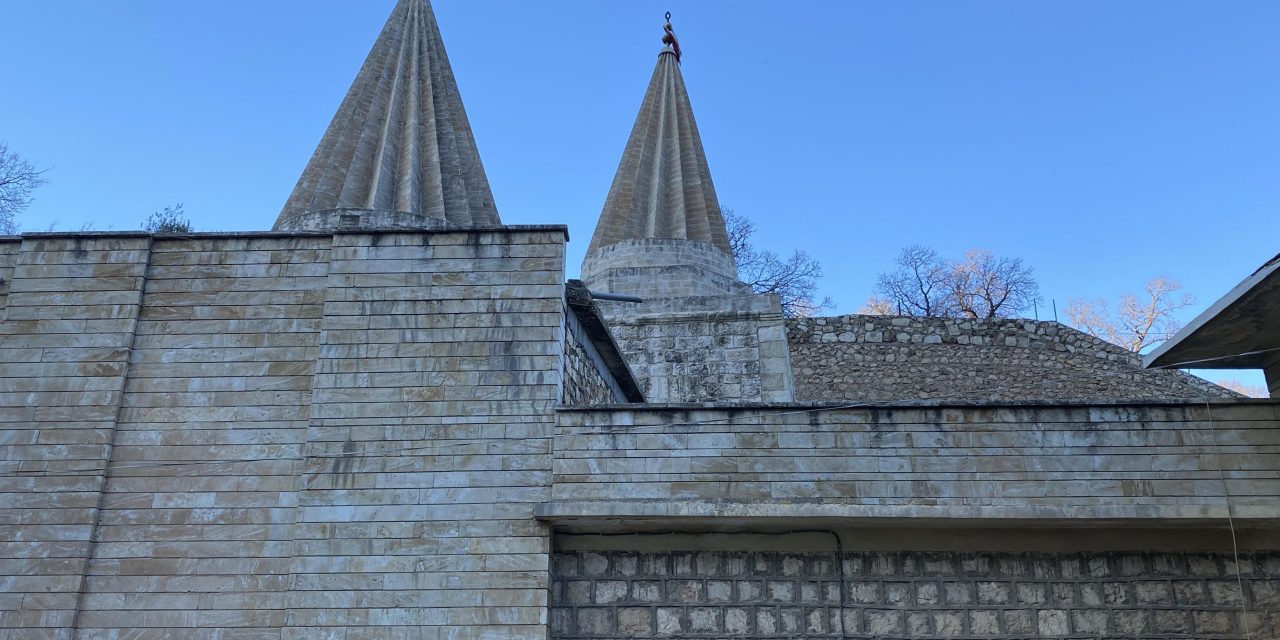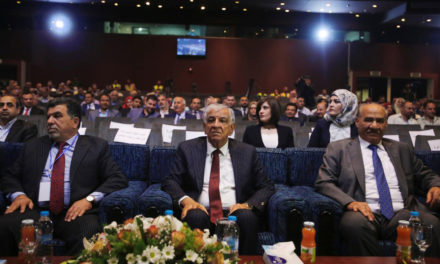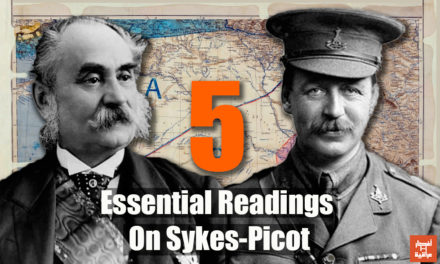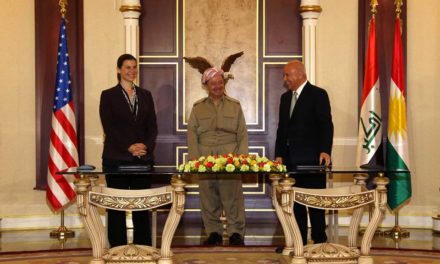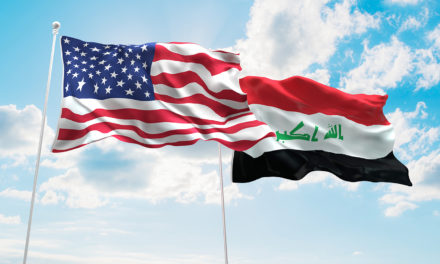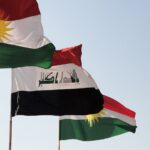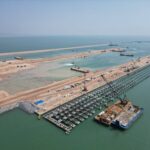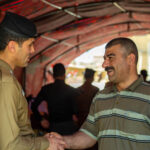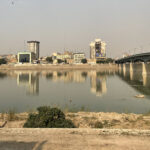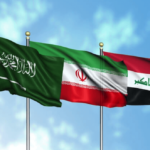Kurds often quip that they are the largest people without a nation, and they are right. This denial of national aspiration contributes to a narrative of victimhood that is today central to Kurdish political identity. Kurds say, for example, that they were divided among four nations after World War One. This complaint is exaggerated. It was the Treaty of Zuhab which broadly set the Ottoman-Persian border in 1639, and the Treaties of Erzurum in the early nineteenth century which confirmed the division between what is now the Kurdish regions of both Iran and Iraq.
Kurds are more accurate, however, when they argue that Western powers betrayed them after World War I. Point 12 of President Woodrow Wilson’s “Fourteen Points” promised “the other [non-Turkish] nationalities which are now under Turkish rule should be assured an undoubted security of life and an absolutely unmolested opportunity of autonomous development.” The 1920 Treaty of Sèvres promised a referendum in Kurdish populated areas of Turkey and the Mosul vilayet in Iraq but, three years later, as Mustafa Kemal Atatürk successfully rallied Turks against European inroad into Anatolia and the region’s territorial division, the Great Powers reversed themselves. The 1923 Treaty of Lausanne effectively erased the promises made to the Kurds just three years earlier.
Across the region, Kurds remember and commemorate other tragedies. In Turkey, Kurds commemorate the Dersim Massacre. The Mahabad Republic remains a formative event for Kurdish nationalists in Iran (and Iraq), even though it lasted less than a year and ended in tragedy. Within Iraq, Kurds still consider former U.S. Secretary of State Henry Kissinger a villain for his betrayal of their insurgency against the Baathist regime. Certainly, Kissinger’s realist cynicism had second and third order effects for which the region—and the reputation of the United States—still pays.
Every Iraqi Kurd learns about late dictator Saddam Hussein’s terror and Anfal campaigns. Regional authorities bring any official visitor to Sulaymani to the “Red Prison,” a Saddam-era detention, torture, and execution center in the city. The Kurdistan Regional Government built a monument and museum in Halabja, promoting the town which was ground zero for chemical weapons attacks into an international symbol of Kurdish victimhood, and every year, Kurds observe a moment of silence to coincide with the anniversary of the Halabja attacks.
In the Kurdish case, however, the remembrance of tragedy is also imbued with cynicism. Former Kurdistan Regional Government President Masoud Barzani would often remind critics that Saddam’s regime killed up to 5,000 members of his tribe. That just 13 years later, he was willing to welcome Saddam’s forces into Erbil in order to kneecap his Kurdish political rival Jalal Talabani, however, suggests Masoud cared little for the victims beyond the political capital he could make off their murders. Then, in 2006 in Halabja, local residents rioted and destroyed the Anfal monument and museum out of anger about how Kurdish politicians would parachute in with VIPs to commemorate the dead, but embezzle development funds and ignore the living in Iraqi Kurdistan’s sixth largest city.
Such political cynicism chafes at Kurdish civil society, but what makes it worse is when tragedies are preventable. Consider, for example, the Yezidis, an ancient community centered around Mosul and Sinjar in northern Iraq. Yezidis remain furious with the Kurdistan Democratic Party (KDP) and now-Prime Minister Masrour Barzani both for turning a deaf ear to their warnings about the Islamic State prior to its rise, and then for abandoning them in their hour of need. The rest of the Yezidi tragedy is well-known: The Islamic State overran Sinjar and other Yezidi areas, slaughtered the men and sold the women into sexual slavery. While groups affiliated with the Kurdistan Workers Party (PKK) and, to a lesser extent, the KDP peshmerga rescued or recovered some Yezidi girls and women from enslavement, many thousand remain missing. For the Yezidis, this is genocide in progress.
Iraqi Kurdish leaders have incorporated the Yezidis’ plight into their own narrative of victimhood, as they seek to springboard tragedy into opportunity. Kurdish leaders pay lip service to the Yezidis when they pose with Nobel Prize winner Nadia Murad but, given the opportunity, they fail once again to protect Kurds in need.
In December 2019, I had the opportunity to travel in the Sinjar region with a delegation from the United Nations High Commissioner for Refugees. In Sinun [Snuny], a largely Yezidi town just over seven kilometers from the Syrian border; we met not only with Yezidis who had returned from Islamic State captivity, but we also met with some of the activists who continued the dangerous work to return home those still captive, several hundred of whom remain in areas of Syria occupied by Turkish proxy forces, and in Turkey itself. While American and other Western diplomats dismiss locals’ belief that many of the Yezidi women are still alive, some of the activists were able to show videos sent by smugglers with proof of life with regard to specific girls and women. The smugglers demand anywhere from a couple thousand dollars to, in some cases, $70,000. Often, locals are unable to pay.
Contrast this with the Kurdish leadership’s public professions of sympathy and its demands to the international community that it should be compensated—diplomatically if not financially—for the trauma which Kurds have faced. While this rhetoric comes easy, the Kurdish leadership’s willingness to facilitate the return of kidnapped Yezidis does not. Perhaps money is tight—Iraqi Kurdistan remains billions of dollars in debt. That excuse rings empty, however, when the Barzanis were able to last year spend upwards of $40 million on two Beverly Hills mansions, not to mention London flats. This comes, of course, just a few years after Masrour Barzani made the largest residential real estate purchase in the greater Washington, DC area, an ostentatious estate worth upwards of $10 million. Forfeiting even one of these purchases could yield enough money to return all the missing Yezidi women who have been located by smugglers and middlemen.
Make no mistake: Kurds—and Iraqi Kurds in particular—have suffered disproportionate tragedy. It is understandable that the legacy of such tragedy has been internalized in Kurdish culture. Of course, Kurds are not alone in commemorating victimhood. Israelis commemorate the Holocaust, and Armenians mark their genocide. Tragedy is history and should not be forgotten. What compounds the tragedy in Iraqi Kurdistan’s case, however, is how quickly the Kurdish leadership has sought to capitalize on Yezidi victimhood while simultaneously ignoring opportunities first to prevent it and then to rescue those still suffering. Jews and Armenians swear “never again,” and both Israel and Jewish groups became famous for hunting down the Nazis responsible for Jewish deaths, and for seeking to reunite those who survived but were separated from their families.
The leadership in Erbil does no such thing. Perhaps the latest Kurdish tragedy, then, is that Kurds are saddled with a leadership that rather speak about justice for the Yezidis and buy mansions, apartments, and luxury cars, rather than spend a fraction of that cost on affecting freedom for those who still suffer under their kidnappers and tormentors.

Michael Rubin
Michael Rubin is a resident scholar at the American Enterprise Institute and a senior lecturer at the Naval Postgraduate School in Monterey, California. He was editor of Middle East Quarterly and is author of Kurdistan Rising? (AEI, 2016). His most recent book chapter is on the history of KRG corruption in Routledge Handbook of the Kurds (Routledge, 2018). He received his Ph.D. in history at Yale University, and previously taught at both the Universities of Sulaymani and Salahuddin in Iraqi Kurdistan.

